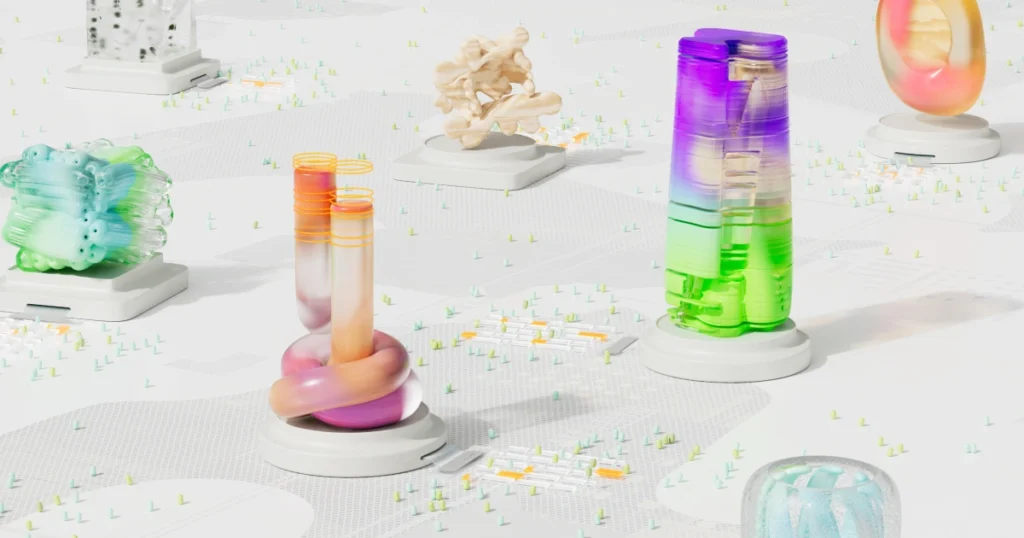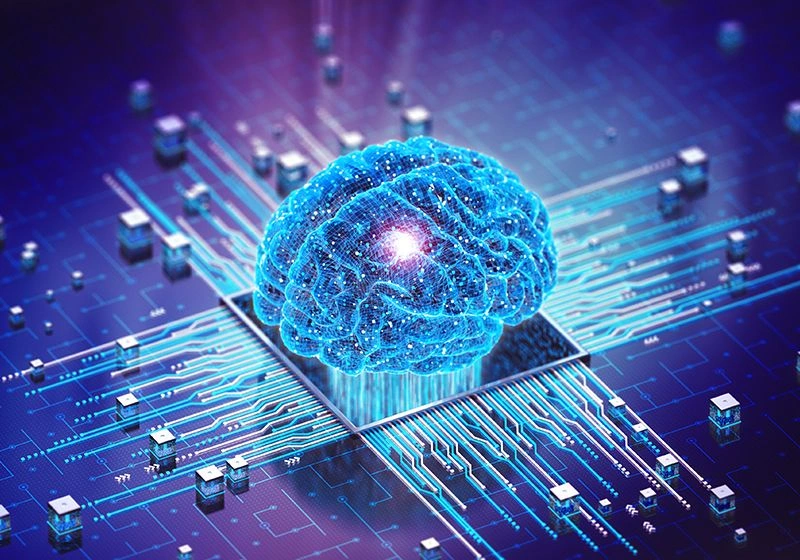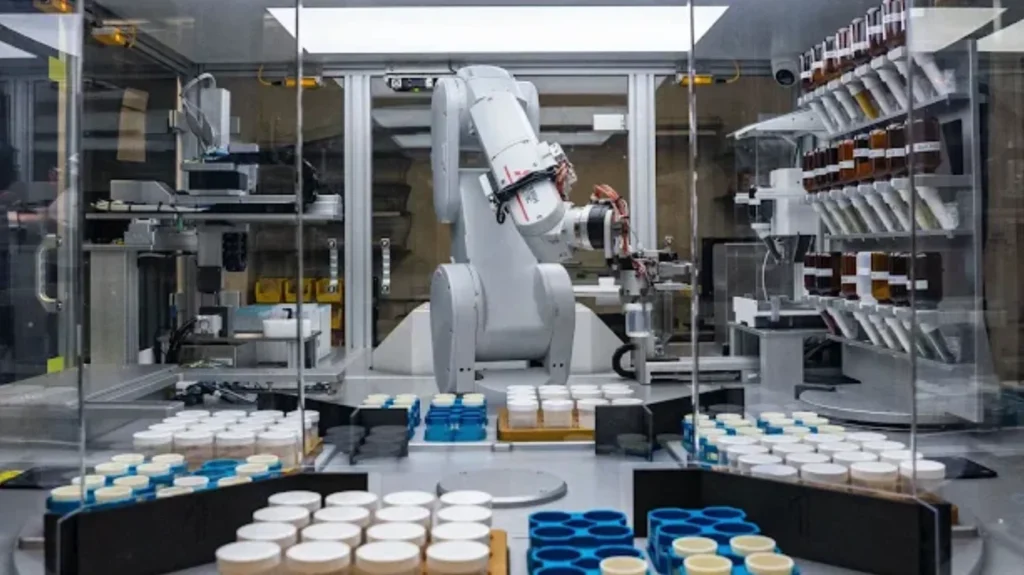DeepMind AI reshapes science at a pace we’ve never seen before. This Google-powered technology solves problems that scientists would need centuries to handle on their own. Take AlphaFold – it predicts protein structures with amazing accuracy in just minutes. Scientists call this one of the most important breakthroughs in biology’s history.
On top of that, Google DeepMind’s GNoME found that there was 2.2 million new crystals, with 380,000 stable materials that could drive tomorrow’s technologies. This finding packs about 800 years of scientific knowledge into one discovery. The system found 528 potential lithium ion conductors – 25 times more than earlier studies – that could lead to better rechargeable batteries. These achievements, combined with 200 million protein structures that AlphaFold 2 predicted in 2022, show how much AI changes everything.
AI breakthroughs reach far beyond just one field. Gemini 2.5 handles multiple types of data at once, which makes it better suited for complex scientific work. This piece shows how Google DeepMind reshapes the scene in medicine, environmental science, physics and materials research – and what these changes mean for your future.
DeepMind AI’s Role in Scientific Discovery

Image Source: Google DeepMind
Google DeepMind AI stands out as one of the most advanced AI research labs that challenges scientific discovery limits. This trailblazing organization started in 2010, and Google acquired it in 2014. It has grown from solving games to tackling some of science’s toughest problems.
What is Google DeepMind AI?
Google DeepMind AI blends deep learning with reinforcement learning to build systems that learn from experience. Unlike old-school AI that follows set rules, DeepMind creates algorithms that get better through trial and error—just like humans do.
DeepMind works as a research lab that develops artificial general intelligence (AGI)—systems that can handle any intellectual task humans can. The company doesn’t just want to make smart software; they want to solve complex scientific problems that help humanity.
Neural networks form the heart of DeepMind’s approach. These networks analyze huge amounts of data to spot patterns and power everything from healthcare diagnostics to breakthroughs in material science. Their reinforcement learning methods help AI systems make better decisions through reward-based training.
Notable DeepMind technologies include:
- AlphaFold: Predicts protein structures with near-experimental accuracy
- GNoME: Discovers new materials with specific properties
- Gemini: Processes multiple data types simultaneously
- AlphaGeometry: Solves complex mathematical proofs
How DeepMind AI is transforming science
DeepMind AI has changed the way scientific research moves forward. Scientists used to spend decades studying a single question through careful experiments. DeepMind now speeds up this process by a lot.
To name just one example, see protein folding—scientists needed years of lab work to figure out a single protein structure. Now, AlphaFold does this in minutes, giving scientists quick insights into how proteins work and cause diseases.
GNoME has found millions of potentially stable materials in materials science, squeezing centuries of research into months. This speed-up leads to faster development of better batteries and advanced semiconductors.
Medical research has improved too. DeepMind AI looks at medical images more precisely than human experts in some cases. It catches subtle patterns that might show disease. The AI also predicts weather patterns and flood risks with amazing accuracy in environmental science.
DeepMind’s biggest impact lies in how scientists think about questions. Instead of testing one idea at a time, they can now explore many possibilities at once through simulation and prediction.
Why 2025 is a pivotal year for AI in science
The year 2025 marks a turning point for AI in scientific discovery because of three factors: tech maturity, wider access, and use across different fields.
DeepMind’s systems can now solve problems that machines couldn’t handle before. AlphaGeometry proves complex math theorems without human help, showing reasoning skills we thought only humans had.
More research labs can use these powerful tools through partnerships and cloud platforms. Smaller labs now do research that only top institutions could do before.
Different scientific fields share insights like never before. AI models trained in physics help with biology research, and chemistry algorithms boost materials science.
The rise of autonomous scientific discovery brings the biggest change. DeepMind systems create their own theories, design experiments, and understand results with little human help. Science has entered an age where AI doesn’t just help research—it leads discovery.
Watch for DeepMind to announce major scientific breakthroughs across many fields throughout 2025. Each discovery will show how AI keeps getting better at exploring science.
Breakthroughs in Life Sciences and Biology

Image Source: The Scientist
DeepMind AI tools have changed life sciences by breaking down biological mysteries at unprecedented speed. Scientists now understand living systems at the molecular level in completely new ways.
AlphaFold and AlphaFold 3
AlphaFold stands as a quantum leap in protein structure prediction that solved a decades-old biology challenge. Scientists once needed years and hundreds of thousands of dollars to determine a single protein structure. Now AlphaFold predicts these structures in minutes with remarkable accuracy.
Google DeepMind showed AlphaFold 3 in May 2024, pushing capabilities way beyond its earlier versions. This game-changing model can:
- Predict structures of proteins, DNA, RNA, and their interactions
- Model chemical modifications to biomolecules
- Create predictions for molecules commonly used in drugs
- Achieve at least 50% improvement over existing prediction methods
AlphaFold 3 works with drug-like interactions, including protein-ligand binding and antibody-target interactions. The system has doubled prediction accuracy for some key molecular interaction categories. Scientists worldwide can access these powerful tools for non-commercial research through the free AlphaFold Server.
AI-powered brain mapping
Google Research teamed up with the Institute of Science and Technology Austria to create LICONN, a revolutionary brain mapping method. This technique expands brain tissue while keeping cellular structures intact. Light microscopes can now capture nanoscale features that once needed expensive electron microscopes.
DeepMind’s neural networks have also copied how our brains guide us through spaces. Their research on grid cells—neurons in hexagonal shapes that help animals track movement—has expanded our knowledge of spatial navigation. These artificial models show how grid cells calculate the best routes between locations, teaching us about complex brain functions.
AI in drug discovery and disease research
DeepMind’s AlphaGenome predicts how DNA mutations affect biological processes that regulate genes. This tool leads the field across genomic prediction measures, beating the best external models in 22 out of 24 evaluations. Scientists used AlphaGenome to break down cancer-associated mutations in T-cell acute lymphoblastic leukemia and successfully replicated known disease mechanisms.
AI breakthroughs speed up drug development timelines significantly. Traditional drug discovery usually takes 3-6 years in pre-clinical stages and costs billions of dollars. AI has changed this landscape completely. Exscientia announced the first AI-designed drug molecule to enter human clinical trials in early 2020. Insilico Medicine started Phase I trials in 2022 for an AI-discovered molecule targeting a novel AI-discovered target—all at a fraction of traditional costs and time.
DeepMind AI will keep advancing life sciences through 2025 with powerful predictive models that compress years of research into days. These advances speed up treatments for conditions that doctors once thought untreatable.
AI for Earth and Environmental Science
DeepMind AI technologies tackle urgent environmental challenges that affect millions of people’s lives worldwide. These systems help communities prepare and respond to natural disasters through innovative applications in flood prediction, wildfire detection, and weather forecasting.
Flood forecasting with AI
Google’s AI-powered flood forecasting system provides critical early warnings to 460 million people across 80 countries. Traditional methods depend on streamflow gages, which most rivers worldwide lack. This technology uses machine learning to predict flooding up to 7 days ahead.
The system started as a pilot in India’s flood-prone Bihar state and expanded globally. Google’s researchers created models using Long Short-Term Memory networks (LSTMs) that predict floods even in regions without local data.
The forecasting technology has transformed prediction capabilities in developing nations. AI advancements now make flood forecasting access in Africa comparable to Europe. Communities receive alerts through Google Search, Maps, and Android notifications when the system detects potential flooding. This gives them crucial time to prepare.
FireSat and wildfire detection
FireSat showcases a groundbreaking partnership between Google Research, Earth Fire Alliance, and Muon Space to transform wildfire detection. This satellite constellation, backed by $13 million in Google.org funding, launched its first prototype in March 2025.
Firefighting teams face major limitations with current satellite imagery. Low resolution and slow updates make it impossible to spot fires smaller than a soccer field. FireSat will provide global high-resolution imagery every 20 minutes and detect fires as small as a classroom (5×5 meters) when fully operational.
AI powers the system to compare current images with thousands of previous images from the same location. It accounts for weather conditions and other factors to identify fires reliably. FireSat has already detected small Oregon fires that existing satellite systems missed.
GraphCast for weather prediction
Google DeepMind’s GraphCast delivers unmatched accuracy in medium-range weather forecasting. This AI model predicts weather conditions up to 10 days ahead with more precision and speed than traditional systems.
GraphCast outperformed the industry gold standard (the European Center for Medium-Range Weather Forecasts’ High Resolution Forecast) on more than 90% of test variables. The system achieved superior results on 99.7% of variables in the troposphere—where accurate forecasting matters most.
The system excels at predicting extreme events. It tracks cyclone movements, spots atmospheric rivers linked to flood risks, and forecasts extreme temperatures accurately. GraphCast correctly predicted Hurricane Lee’s Nova Scotia landfall nine days in advance last September.
The system generates 10-day forecasts in under a minute on a single Google TPU v4 machine. Traditional methods need hours to achieve the same results. The European Center for Medium-Range Weather Forecasts runs a live experiment with the model.
Physics, Chemistry, and Materials Innovation

Image Source: New Atlas
Google DeepMind AI transforms physics and chemistry through state-of-the-art advances. Their groundbreaking work reduces research time from years to days, opening new possibilities in many scientific fields.
GNoME AI and new material discovery
Graph Networks for Materials Exploration (GNoME) has found 2.2 million new crystals. This achievement equals almost 800 years of traditional research. The AI system finds promising materials by predicting stability with remarkable precision. Scientists identified 380,000 exceptionally stable crystals that could be synthesized in labs.
GNoME raised the success rate of materials stability prediction from 50% to 80%. Labs have already created 736 of GNoME’s predicted materials independently, which proves the model’s reliability.
Scientists use these findings to develop:
- Next-generation batteries for electric vehicles
- Superconductors for more efficient computing
- Green materials for cleaner technologies
Quantum chemistry simulations
DeepMind’s DM21 neural network marks a significant step forward in quantum chemistry simulations. The system predicts chemical interaction energy at the quantum level and performs better than traditional standards. Scientists can now understand molecular behavior without expensive lab experiments.
FermiNet, another state-of-the-art solution from DeepMind, models electron quantum states that form chemical bonds. These states challenge most calculation methods, yet FermiNet delivers unmatched accuracy, particularly when molecules stretch or break.
AI in nuclear fusion control
AI serves a vital role in controlling nuclear fusion reactions. Research teams at the DIII-D National Fusion Facility taught a deep reinforcement learning algorithm to adjust magnetic confinement fields. The system maintains plasma stability up-to-the-minute.
The AI combines data from hundreds of sensors to provide adaptive control and prevents disruptive tearing instabilities. Scientists can now explore operating scenarios that seemed too dangerous before.
Princeton researchers report that AI models can predict potential plasma instabilities up to 300 milliseconds in advance. This gives enough time to adjust parameters and keep the system stable.
The Future of AI-Driven Science
“The development of full artificial intelligence could spell the end of the human race.” — Stephen Hawking, Theoretical Physicist, University of Cambridge
Mathematical reasoning represents the next frontier for DeepMind AI systems. AlphaGeometry and AlphaProof have solved four out of six problems from the 2024 International Mathematical Olympiad and achieved silver medal level performance for the first time.
From AlphaGeometry to AlphaProof
AlphaProof stands as a breakthrough in formal mathematical reasoning. The system teaches itself to prove mathematical statements through reinforcement learning paired with pre-trained language models. The system creates a bridge between formal and natural language that helps translate math problems into formal statements which can be verified for correctness. The system solved the most challenging IMO problem that only five human contestants could solve.
Gemini 2.5 and multimodal research tools
Gemini 2.5 works like a “thinking model” that reasons through complex problems before giving answers. The advanced system outperforms common measures by significant margins. It features a 1 million token context window with plans to double that capacity soon. The system processes text, audio, images, and video simultaneously.
Gemini 2.5 shows remarkable skill at creating code applications and visual web apps. Researchers can now analyze big datasets with a single tool that understands information in different formats.
The rise of autonomous scientific discovery
AI that powers scientific discovery itself remains the ultimate goal. Autonomous discovery combines robotics, artificial intelligence, and machine learning to compress years of research into days. Scientists can focus on creative work while AI handles repetitive tasks.
Fully autonomous AI researchers could emerge soon. Projects like Sakana’s AI Scientist show systems that read literature, generate research ideas, design experiments, and write papers without human input. These advances could speed up discovery rates by 100-1000x.
Conclusion
DeepMind AI has changed scientific discovery from a methodical process into a supercharged engine of state-of-the-art solutions. AlphaFold now predicts complex protein structures within minutes instead of years. GNoME has found millions of new materials – work that would have taken eight centuries through traditional research. These breakthroughs go beyond labs to solve pressing challenges from treating diseases to predicting climate patterns.
AI systems compress timelines dramatically, and that’s their most impressive feature. Scientists can now complete decades-worth of tasks in days or minutes. They test hundreds of hypotheses at once rather than one after another, which changes science’s fundamental progress.
AI will likely evolve from an assistant to a research partner. AlphaGeometry and AlphaProof show reasoning abilities that people once thought only humans possessed. We’re entering a new scientific age where AI not only speeds up research but leads to groundbreaking findings.
Website performance needs state-of-the-art solutions too. Businesses lose $2.6 billion yearly from slow websites. Mehnav builds and upgrades websites that load quickly, stay secure, and work perfectly on mobile devices. Our stunning designs and smooth Add to Cart features keep visitors shopping longer. We’ll improve your existing site or build a new one correctly. Don’t miss another sale.
DeepMind’s achievements show how smart technology tackles complex problems effectively. Scientists now solve challenges that seemed impossible a few years ago. Your future will benefit from discoveries made through this powerful partnership between human creativity and artificial intelligence.
Key Takeaways
DeepMind AI is revolutionizing scientific discovery by compressing decades of research into days, transforming how we approach complex problems across multiple fields.
• AlphaFold predicts protein structures in minutes – solving problems that previously took scientists years and accelerating drug discovery timelines dramatically.
• GNoME discovered 2.2 million new materials – equivalent to 800 years of traditional research, including 380,000 stable crystals for future technologies.
• AI now provides flood warnings to 460 million people across 80 countries, predicting disasters up to 7 days in advance without traditional monitoring infrastructure.
• GraphCast outperforms traditional weather forecasting on 90% of test variables while generating 10-day forecasts in under a minute.
• Autonomous scientific discovery is emerging – AI systems now formulate hypotheses, design experiments, and interpret results with minimal human guidance.
The convergence of these breakthroughs marks 2025 as a pivotal year where AI transitions from research assistant to active scientific collaborator, fundamentally changing how discoveries are made and accelerating solutions to humanity’s greatest challenges.
FAQs
Q1. What is Google DeepMind AI and how is it transforming scientific research?
Google DeepMind AI is an advanced artificial intelligence system that combines deep learning and reinforcement learning to tackle complex scientific problems. It’s transforming research by accelerating discoveries in fields like protein structure prediction, materials science, and weather forecasting, compressing years of work into days or even minutes.
Q2. How has AlphaFold impacted the field of biology?
AlphaFold has revolutionized biology by predicting protein structures with near-experimental accuracy in minutes, a task that previously took years. This breakthrough has accelerated drug discovery and deepened our understanding of biological processes, with AlphaFold 3 now able to model interactions between proteins, DNA, and RNA.
Q3. What are some practical applications of DeepMind AI in environmental science?
DeepMind AI is being used for flood forecasting, providing early warnings to 460 million people across 80 countries. It’s also powering FireSat for wildfire detection and GraphCast for highly accurate weather predictions up to 10 days in advance, outperforming traditional forecasting methods.
Q4. How is AI contributing to new material discovery?
The Graph Networks for Materials Exploration (GNoME) system has discovered 2.2 million new crystals, including 380,000 stable materials. This AI-driven approach has dramatically improved the discovery rate of materials stability prediction, potentially leading to breakthroughs in battery technology, superconductors, and sustainable materials.
Q5. What does the future hold for AI-driven scientific discovery?
The future of AI-driven science is moving towards autonomous discovery, where AI systems can formulate hypotheses, design experiments, and interpret results with minimal human input. Advanced models like Gemini 2.5 are paving the way for multimodal research tools that can process various data types simultaneously, potentially accelerating discovery rates by 100-1000 times.

![DeepMind AI: What Google's Latest Breakthroughs Mean for Science [2025]](https://mehnav.com/wp-content/uploads/2025/07/featured-image-1024x584.webp)

